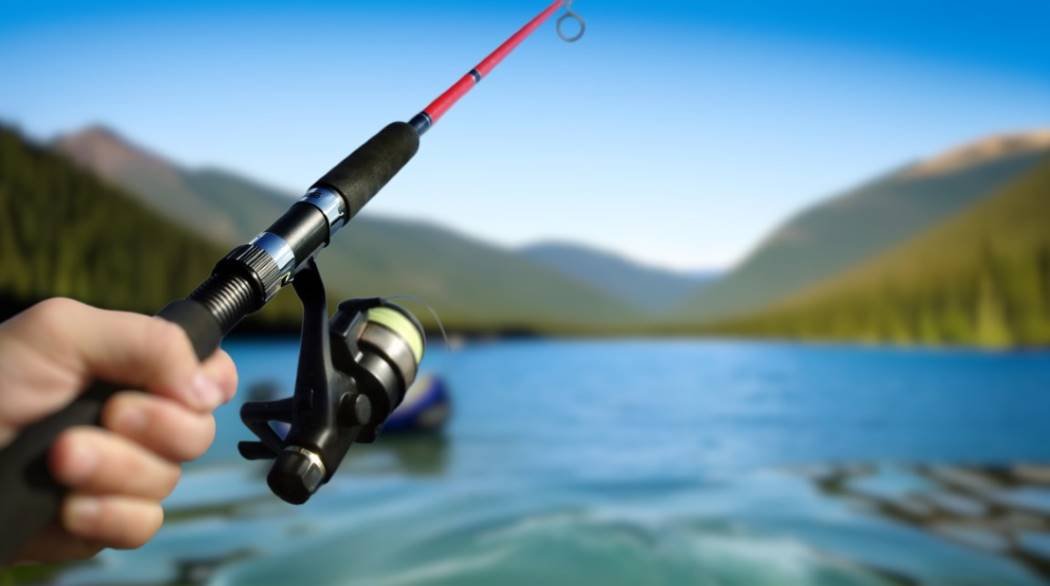Best Gear Ratio for Bass Fishing & How to Choose Reel Speed
Bass fishing is an exciting and challenging sport that requires the right mix of skill, patience, and knowledge to master. One crucial aspect of bass fishing that can determine your success is selecting the right gear ratio for your reel. In this article, we will explore what gear ratio is, how it affects reel performance, and provide recommendations for the best gear ratios to use for various bass fishing techniques.
What is Gear Ratio and How Does It Affect Reel Performance?
Gear ratio refers to the number of times the spool rotates for each turn of the handle on a fishing reel. For example, a gear ratio of 6.2:1 means that the spool rotates 6.2 times for every single turn of the handle. In simpler terms, gear ratio determines the retrieval speed of your reel.
Retrieval speed is important in bass fishing because it affects how quickly you can bring your lure back to the boat, which influences your ability to effectively work your lure and cover water. Different gear ratios are suited to different fishing techniques and lure types, making it essential to choose the right one for the specific situation.
Overview of Gear Ratios for Bass Fishing: Matching Ratio to Technique
Selecting the right gear ratio for bass fishing depends on factors such as the type of lure you’re using, your preferred fishing technique, and the water conditions you’re fishing in. Here’s a general guide to gear ratio recommendations for different techniques and lures:
- Deep crankbaits, swimbaits, and deep water spinnerbaits: Use a gear ratio of 5:1 to 5.4:1 for slow retrieve and to maintain better control over these lures in deeper waters.
- Squarebill crankbaits, spinnerbaits, and umbrella rigs: Opt for a medium gear ratio of 6:1 to 6.4:1, which provides a balance of speed and control for these versatile lures.
- Topwater, jerkbaits, jigs, plastics, and lipless crankbaits: A high gear ratio of 7:1 to 8.1:1 is ideal for working these baits fast and efficiently, giving you more control over their action.
Different reel types also offer distinct gear ratio ranges:
- Baitcaster reel speeds: These reels generally range from 5.0:1 to 9.1:1, with professional anglers often preferring higher speeds of 7.1:1 to 9.1:1 for faster tactics.
- Spinning reel speeds: Spinning reels usually offer gear ratios of 5.2:1 to 6.2:1, with some models providing faster retrieval speeds of 7.0:1 for specific applications.
- Spincast reel speeds: These beginner-friendly reels typically have gear ratios of 3.1:1 to 5.1:1, which are slower than baitcaster and spinning reels but still suitable for various techniques.
Choosing the Best Gear Ratio for Bass Fishing: Factors to Consider
When selecting the ideal gear ratio for bass fishing, consider the following factors:
- Fishing technique: Different techniques require varying speeds and control, so choose a gear ratio that complements your preferred method.
- Lure type: The size, weight, and action of the lure directly impact the gear ratio you should use for optimal performance.
- Water conditions and vegetation: The depth, clarity, and amount of vegetation in the water can dictate the retrieval speed needed to effectively work your lure.
Here are some recommendations based on specific techniques and lures:
- Slow retrieve for crankbaiting: Use a low gear ratio of 5:1 to 5.4:1 for deep-diving crankbaits and crawling a crankbait.
- Medium gear ratio for spinnerbaits and topwaters: A gear ratio of 6:1 to 6.4:1 is ideal for these versatile techniques.
- High gear ratio for jerkbaits, jigs, and Texas rigs: Opt for a fast gear ratio of 7:1 to 8.1:1 for increased control and quick lure retrieval.
- Fast gear ratio for flipping, pitching, and frog fishing: Select a high-speed gear ratio of 8:1 or higher for these techniques demanding rapid action.
The Best All-Around Gear Ratio for Bass Fishing: Striking a Balance
For anglers seeking a versatile gear ratio that can cover multiple techniques and lure types, there are some factors to consider:
- Baitcaster reels: Choose a reel with a gear ratio between 5.4:1 to 6.2:1 for versatility across various techniques.
- Spinning reels: Opt for a reel with a gear ratio of 5.2:1 to 6.2:1 for a range of applications, from live bait presentations to artificial lure retrieval.
Overall, a gear ratio of 6.2:1 is often considered the ideal all-around reel speed for bass fishing, providing a balance of speed and control for various techniques.
Professional Anglers’ Preferred Gear Ratios: Expert Insights
Many professional bass anglers prefer high-speed reels for short-distance techniques, such as flipping and pitching, where quick lure retrieval is crucial. They also tend to use low gear ratios for big baits and fishing in thick vegetation, which require more torque and control.
High-speed baitcaster reel speeds of 7.1:1 to 9.1:1 are popular among professionals for their efficiency and versatility across multiple techniques, from topwater to jigs and plastics.
Conclusion: Experiment, Adapt, and Succeed
Choosing the right gear ratio for bass fishing is essential for maximizing your success on the water. By considering factors such as fishing technique, lure type, and water conditions, you can select the best gear ratio for your specific situation. Remember that personal preference and experimentation also play a role in finding the perfect gear ratio for your needs. By adapting to various conditions and refining your gear choices, you can become a more successful and versatile bass angler.

